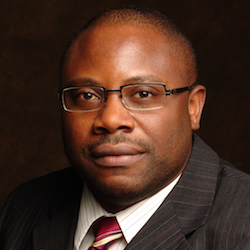Source: College of Engineering

Robert Hampshire
As COVID-19 swept across the city of Detroit, it brought with it a wave of food insecurity, particularly among low-income residents and seniors who rely on public transportation and can only afford to buy small amounts of food at a time. Now, a U-M research team has stepped in to help identify solutions.

HV Jagadish
Funded by a National Science Foundation RAPID grant, they aim to help the city identify the most seriously affected areas and provide policy and technical recommendations. These recommendations might include redesigning bus routes and schedules, using scooter or bike share services to improve food access, repurposing existing city assets like shuttle vehicles and improving school lunch delivery programs.
The research team includes HV Jagadish, Bernard A. Galler Professor of Electrical Engineering and Computer Science; Robert Hampshire, an associate professor at the U-M Transportation Research Institute, the Department of Industrial and Operations Engineering, and the Ford School of Public Policy; and Aditi Misra and Tayo Fabusuyi, both assistant research scientists in the U-M Transportation Research Institute (UMTRI). Hampshire has also hired two recent Ford School master of public policy graduates to be the project manager and liaison to the City of Detroit.

Robert Hampshire
“Low-income households have fewer options to secure food and other basic supplies without being exposed to the coronavirus,” Hampshire said. “The reasons for food insecurity may vary – from students dependent on school lunch to seniors without smartphones or internet access to order delivery or use online payment systems. Even though many schools tried to continue their school lunch programs during the school closures, students struggle to access those meals. Additionally, many families are cut off from food and grocery delivery services and are at higher risk for exposure due to more frequent trips to the grocery store, often by public transit.”
Jagadish is contributing technical expertise to the project, including a data analysis technique that makes it possible to combine sets of geographical data that are organized in different ways—for example, comparing school lunch data that’s organized by school district with transit data that’s organized by ZIP code.

Aditi Misra
The two sets would ordinarily by difficult or impossible to compare, but Jagadish has developed a system called GeoAlign that uses what’s called a “crosswalk algorithm” to find other variables in the dataset that correlate with the ones being studied and are available on a finer geographic level. It then uses those additional data points to infer the geographic distribution of the data that’s being studied.
“With this project, we are combining data that typically aren’t analyzed together to better support holistic decisions,” Jagadish said. “We will be able to link available data on food security with information about when, where, how, and why people travel.”

Tayo Fabusuyi
Those insights will help Hampshire and the public policy team to make evidence-based policy recommendations to address food insecurities and increase access to grocery stores.
“Ultimately, we hope our work will help make vulnerable families in Detroit more resilient and inform future emergency food distribution programs for populations that do not have regular broadband internet or smartphones nationwide,” Hampshire said.

